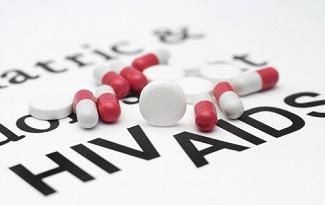Addressing ART Adherence in Hispanic/Latino Men Living with HIV
Investigators found these populations are younger and are living at or below poverty were at lower adherence to ART.

How can we improve the treatment of those with human immunodeficiency virus (HIV) infection? According to the Centers for Disease Control and Prevention (CDC), roughly 1.2 million people are living in the U.S. with HIV, and 14% of them don’t know their diagnosis. It is estimated that around 36,000 new cases of HIV occur each year. Thankfully, this number has been decreasing since 2014, but what we do know is that HIV diagnoses are not evenly distributed across the U.S. and that more new cases are identified in the South.
One of the first steps in prevention is understanding why might prevent people from getting testing or even taking their antiretroviral therapy (ART) following diagnosis. In the case of those patients already diagnosed with HIV and taking ART, what might be the roadblocks for their adherence to the medication regimen?
Researchers recently published in the CDC’s Morbidity and Mortality Weekly Report (MMWR) regarding the barriers to ART adherence among Hispanic and Latino men who have sex with men in the U.S. over the last four years. Pulling from 2015-2019 data from the Medical Monitoring Project, 1,673 men were assessed for factors that might contribute to their missed ART doses. Data included everything from a scale of ART adherence to age, poverty, recent drug use, depression, unmet needs for ancillary services, etc. As there have not been many studies focused on this, these findings are particularly important for future public health efforts.
The authors noted that, “on a three-item ART adherence scale with 100 being perfect adherence, 77.3% had a score of ≥85. Younger age, poverty, recent drug use, depression, and unmet needs for ancillary services were predictors of lower ART adherence. The most common reason for missing an ART dose was forgetting; 63.9% of persons who missed ≥1 dose reported more than one reason. Interventions that support ART adherence and access to ancillary services among Hispanic/Latino MSM might help improve clinical outcomes and reduce transmission.”
While this analysis is limited to those who self-identified as Hispanic/Latino and as having sex with men in the previous year, the findings are important for further public health interventions.
Really, what these researchers found is that those men who were younger and were living at or below poverty were at lower adherence to ART. Moreover, those reporting drug use, depression, and unmet needs for ancillary services, all had lower adherence to ART. Fundamentally, what this research sheds light on is that we need to do better to provide resources for ART adherence and targeted education.
Additional ancillary resources and efforts to support those in low-resource areas is a critical public health requirement currently, but that much more important to help support those living with HIV. ART adherence is a vital piece to reducing transmission and ensuring a longer, healthier life for those with HIV. The challenges though of paying for the medications, in addition to understanding what treatment means and requires, must be built into HIV/AIDS efforts.
As the authors emphasize in their report: “culturally tailored interventions aimed at improving adherence, particularly among Hispanic/Latino MSM who are younger, live in poverty, use drugs, and have unmet needs for ancillary services, might improve viral suppression, leading to better health outcomes and decreasing HIV transmission.”




















